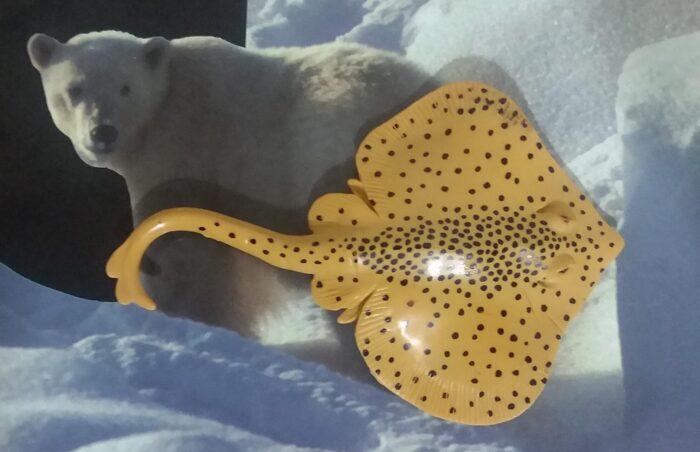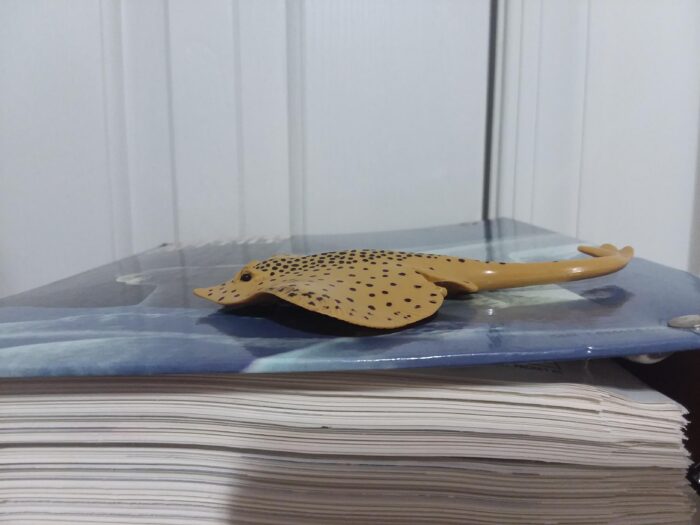Amongst the many different species of batoids, attention will shift to the relatively obscure spotted ray (Raja montagui). The spotted ray, also known as the Homelyn ray, is a victim of a common name polyphyly as it’s actually a skate, which is a separate order from true rays. This species is commonly found across all coasts of the British isles with fewer sightings around the English Channel, North Africa, and the Mediterranean. Spotted rays prefer shallow waters as it usually swims near the continental shelf. Spotted rays grow to a disc length of about 50cm with a maximum of 80cm. Not much informatics exist of the population but is considered to be ‘least concern’. Spotted rays have minor importance to commercial fisheries and are often caught as bycatch. This species has a varied diet compared to nearby batoid species, feeding on fish, amphipods, shrimps, mollusks, and crabs.

Today’s review will be the blog’s first covering of a figure from Chap Mei. This company is mostly recognized for the toys it produces for the Animal Planet line that’s sold at Toys R Us. This ‘stingray’ figure is part of a large deep-sea submarine playset, but I can’t recall if this was a figure from the recent lots I’ve purchased or from a playset my brother once owned. While labeled as a ‘stingray’, I had my doubts. Luckily, enough research led me to find this was the skate known as the spotted ray. This appears to be one of the lesser-known species, as it even lacks its own Wikipedia page.

The figure has a disc length of about 7.4cm, which places it roughly in the 1:5-1:10 scale for this species. As for the sculpt on the dorsal half, it appears to be very competent. The overall shape of the rostrum, pectoral fins, pelvic fins, and eyes are all correct. The figure even has small spiracles.

Underneath, there’s still a pretty good amount of detail between the nostrils, mouth, pelvic fins, and even the anus. However, none of these are painted and instead just show the base color of the plastic. The only error I can note is that there are 6 pairs of gills when skates are only supposed to have 5.

Now as for the paintjob, only the top portion is painted, mainly with black spots and the eyes filled in. This is accurate to the species, except each pectoral fin out to have large rings known as ”eye spots”. Otherwise, this figure does a good job of matching the species.

Taken all together, I was fairly impressed with this figure given that it’s an accessory of a larger playset. It’s odd that such an obscure species of skate was used as the reference for this ‘stingray’ given there must have been plenty of popular references for true stingrays. Nonetheless, I consider it a good addition to my collection since there are not many (or any) other figures for this species. For those interested, I believe you would need to purchase the entire playset in order to get this figure.
Disclaimer: links to Ebay and Amazon on the AnimalToyBlog are affiliate links, so we make a small commission if you use them. Thanks for supporting us!



